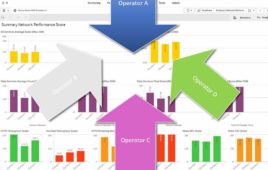With the demand for mobile data access and applications on the rise for many years – especially since the launch of the iPhone – consumers in mature markets generally understand that the mobile Internet comes at a price. And as 3G networks approach peak-hour cell capacity and carriers introduce LTE networks and devices, operators are introducing new ways to align pricing plans for both profitability and subscribers’ segmented needs.
Mobile data delivery costs seem to have permanently ended the days of all-you-can-eat plans with guaranteed maximum bandwidth speeds. Therefore, service providers are seeking to differentiate their offerings to attract and retain subscribers with their variations on mobile data quantities, speeds, services and cost.
 Mobile data pricing, whether through smartphones, tablets or dongles, is therefore experiencing the early stages of maturity, where operators are introducing a variety of plans to determine which ones consumers will most value. Providers’ goals are to balance mobile data supply and demand and broaden packages to best target a diverse set of customers ranging from power users to those trying data plans for the first time.
Mobile data pricing, whether through smartphones, tablets or dongles, is therefore experiencing the early stages of maturity, where operators are introducing a variety of plans to determine which ones consumers will most value. Providers’ goals are to balance mobile data supply and demand and broaden packages to best target a diverse set of customers ranging from power users to those trying data plans for the first time.
Indeed, this process of introducing more targeted offers and refining pricing models happens as any consumer market matures. In the consumer packaged goods space, for example, the Crocs, Inc. shoe company has expanded from its distinctive “Beach” shoe in November 2002 to more than 120 styles of footwear at multiple price points. In the media market, the advent of e-readers and tablets gives consumers the option to subscribe to The Wall Street Journal as a Nook newspaper for 99 cents an issue or $14.99 per month. Or, new subscribers can elect the print and online journal for $2.69 per week, the print edition for $2.29 per week or the online only version for $1.99 per week.
The Art of Pricing
Mobile data pricing is more art than science at this stage, with operators experimenting with several variables. The result is hodgepodge of plans with new options added to operators’ playbooks every couple of months. For example:
• Verizon Wireless has: three tiers of plans each for 3G and 4G mobile broadband; one plan for smartphone data; daily, weekly and monthly prepaid 3G USB modems plans; and four 3G tablet prepaid plans.
• MetroPCS offers three types of LTE plans based on the type and volume of content subscribers desire, in addition to separate 3G data plans.
• 3 Austria offers mobile broadband tariffs with metered or unlimited usage, roaming on other 3 Europe networks at national rates, and a multi-device add-on package.
Furthermore, operators in Poland use numerous offers and incentives to find the “right” data package for subscribers. Plans may include discounts for bundled voice and USB modem users, unlimited usage during night-time hours and a free multi-app “social network package” providing usage of Facebook, Goldenline (a Polish professional social networking site), etc.
Why Subscribers Win
While the myriad of options can cause some confusion about which plan is best for a subscriber, it represents a leap forward for the industry beyond the original one-size-fits-all approach. By offering multiple choices, service providers give subscribers more control over their experience and allow them to pay for what they value the most.
Specifically, subscribers can choose a plan that caps the cost of data at a set monthly rate, so that if subscribers go over the data quantity, they lose network speed. For those who desire high speeds for all of their mobile broadband applications, they can elect plans charging more for additional megabytes once they exceed the baseline rate, maintaining high bandwidth. Or, subscribers can try entry-level data plans with a lower monthly cost instead of committing to a more expensive data plan. And those whose needs vary by the day, week or month can purchase date-based plans to control their costs and only pay for services when needed.
More good news is that further maturity will mean new types of plans in the coming months and years. Vodafone CEO Vittorio Colao last November suggested tiers based on application and service type to better align connection speeds with usage types: “A video tariff guarantees a connection speed that supports video, but then you also have an email tariff for people who are only using small amounts of data.”
In the long run, consumers also benefit as service providers learn the evolving usage patterns and subscriber preferences across the network. This leads to wiser network investments, more refined offers and an improved subscriber experience.
Pricing is the starting point for determining network usage and uptake of new applications and services. The fact that service providers are refining their mobile data price plans shows that they understand that consumers’ preferences and priorities vary and that more customized plans will serve a wider customer base. These advances are a welcome first step of mobile data maturity and will open the door to more price innovation in the coming months and years.
Randy Fuller is director of strategic marketing at Tekelec.




